wikiHow is a “wiki,” similar to Wikipedia, which means that many of our articles are co-written by multiple authors. To create this article, 31 people, some anonymous, worked to edit and improve it over time.
This article has been viewed 77,069 times.
Learn more...
If you have experienced an injury that makes it difficult to walk and you have to use a wheelchair to help you move more easily, don’t be intimidated. It may take a little while to get comfortable in your wheelchair, but you soon you will be able to move around like a pro!
Steps
Getting Familiar with the Wheelchair
-
1Take a look at your wheelchair to see what type you have. Wheelchairs come in different shapes and sizes. Types of wheelchair include the folding manual, rigid manual, and electric wheelchair. Before you can really get moving on one, look at what you have. Different types of wheelchairs have different controls and accessories to help you move around.[1]
- Manual wheelchairs all require you to use your arms to turn the wheels.
- A folding wheelchair will fold. A rigid wheelchair doesn’t collapse.
- Electric wheelchairs include motors and remote controls to help direct and move you faster.
- All wheelchairs have handles on top of the backrest, so friends and family can push you.
-
2Read your wheelchair’s instruction manual to find its brakes. The most important parts to a wheelchair are the brakes. Brakes will allow you to stop when you reach a destination and to keep the wheelchair still for when you get in and out of it. There are usually brake levers and parking breaks.
- Brake levers are usually on the sides of both wheels and you pull them down to stop the wheel.
- A parking break is pedal activated; pushing on the pedal engages it.
Advertisement -
3Explore your wheelchair seat and backrest. Before using the wheelchair, you want to make sure it will be the most comfortable for you. Wheelchairs usually come with cushions on the seat and backrest, but you might need to change some settings to get more comfortable, like adding cushions to push you up or a blanket to cover a cold seat.
- Materials used to make a wheelchair seat can be flexible fabric or solid wood.
- If you have trouble sitting completely upright, find more pillows to add to the seat or the backrest so you can sit in a position that will let you reach controls you need.
Sitting in the Wheelchair
-
1Turn your brakes on. Before you start moving around, you’ll want to get into your chair. First, make sure your brakes are on by checking the sides of your wheels or pressing the pedal brake. This will ensure that your chair stays still while you get in it.[2]
-
2Fold or swing your footplates to the side. Footplates are at the bottom of the wheelchair. They are where you rest your feet while sitting. Before getting into the chair, you will need to fold or swing them away.
- Footplates will fold or swing depending on your wheelchair. No wheelchair type has a particular design of footplate.
-
3Place your hands on the armrests to gently lower yourself. You are going to lower yourself into a sitting position in the wheelchair, so you will want your back to face the chair. To begin lowering yourself, place your right and left hands on the right and left armrests. Then, as you can, lower yourself onto the seat.
-
4Fold or swing your footplates back. Once you’ve lowered yourself onto the seat and you’re comfortable, you will want to fold or swing the footplates back so you can rest your feet on them.
- When seated, you might find that the footplates are not the right height for you. To change the height, use a wrench (one is usually provided with the chair) to loosen the front bolts. Then rotate the footplates to adjust the height to the desired level. Use the wrench to tighten the bolts when you’ve finished adjusting.[3]
Moving Forward and Backward
-
1Grip the wheelchair’s handrails and push towards your face to go forward. After comfortably seated, get ready to start moving! To move forward, grip the wheelchair’s handrails at the top with both hands. Then, while gripping, move your hands away from your body towards your face. Let go, then put hands back and repeat the step.
- Electric wheelchairs have different types of controls to move you forward. These controls can either be a mini joystick that you push forward; a touchpad upon which you place your fingers then drag them forward, away from you; or a switch, which you flip on to move forward.[4]
- Remember to tuck your elbows in when you move through doorways.[5]
-
2Grip the wheelchair’s handrails and push towards your back to go backward. To go backwards, grip the top of the wheelchair’s handrails with both hands. Then, while gripping, move your hands away from your body towards your back. Let go, then put hands back and repeat the step.
-
3Practice at home. After you’ve tried moving forward and backward once, try doing it a few more times in the comfort of your home. Getting used to the actions will prepare you for when you have to use your wheelchair outside.
- When you do use your wheelchair outside, if you’re on a slope, always have a caregiver help you move. It can be dangerous to keep the wheelchair from rolling down if you’re on a downhill slope, and difficult to push the wheelchair up on an uphill slope.
Making Right and Left Turns
-
1Hold your right wheel still and move the left wheel forward to turn right. To turn right hold your right wheel still with the right handrail and move the left wheel forward by gripping the handrail with your left hand and moving your hand away from your body towards your face.
- On an electric chair, turn your joystick to the right, drag your fingers to the right on your touchpad, or flip your right switch on.
-
2Hold your left wheel still and move the right wheel forward to turn left. To turn left, hold the left wheel still with the left handrail and move the right wheel forward by gripping the handrail with your right hand and moving your hand away from your body towards your face.
- On an electric chair, turn your joystick to the left, drag your fingers to the left on your touchpad, or flip your left switch on.
-
3Hold your right wheel and move the left wheel backward to turn back and right. Keep the right wheel still with the right handrail and move the left wheel backward by gripping the handrail with your left hand and moving your hand away from your body towards your back.
-
4Hold your left wheel and move the right wheel backward to turn back and left. Keep the left wheel still with the left handrail and move the right wheel backward by gripping the handrail with your right hand and moving your hand away from your body towards your back.
Getting out of the Wheelchair
-
1Get close to a chair or bed. After you’ve finished practicing moving around, take a rest from the wheelchair. To get out, first position yourself close to your next location, a chair or a bed.
-
2Turn your brakes on. Like when you get into a wheelchair, when you get out you want it to be still. So turn your brake levers back into position to stop your wheels from moving.
-
3Fold or swing the footplates out of the way. Footplates will be in the way when you want to leave your chair, so swing or fold them out of the way and rest your feet on the floor.
-
4Place your hands on both armrests and lean forward. To lift yourself up from the wheelchair, put your right and left hands on the right and left armrests and lean forward to push up.[6]
- Depending on how injured you are, you might need someone to help you safely get out of the chair and into another resting place.
Warnings
- Do not do wheelies! (Unless you have tip bars, or you know what you are doing. If you do happen to tip out backwards for any reason, put your nose to your knees to avoid hitting your head on the ground. If you do have tip bars and you are attempting a wheelie, then make sure your upper body stays perpendicular to the ground, it will help your balance.)⧼thumbs_response⧽
References
- ↑ https://www.spinalcord.org/disability-products-services/types-of-wheelchairs/
- ↑ http://www.ouh.nhs.uk/patient-guide/leaflets/files/11024Pwheelchair.pdf
- ↑ http://www.matsunaga-w.co.jp/global/learn/use.html
- ↑ http://www.atandme.com/?p=950
- ↑ http://www.safety.uwa.edu.au/incidents-injuries-emergency/first-aid/wheelchairs/assistance
- ↑ http://www.safety.uwa.edu.au/incidents-injuries-emergency/first-aid/wheelchairs/assistance
About This Article
Once you've gotten into your wheelchair, adjust the breaks, footpads, and armrests as needed. To move forward, rotate the wheels or push the joystick forward; to move backwards, simply reverse the movements. To turn in a manual wheelchair, hold the wheel on the side that you want to turn still, and then rotate the other wheel. For example, if you want to turn right, keep the right wheel motionless, and turn the left wheel! To learn how to use the brakes to safely stop the wheelchair, read on!
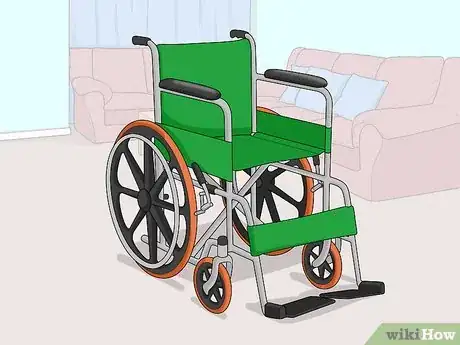
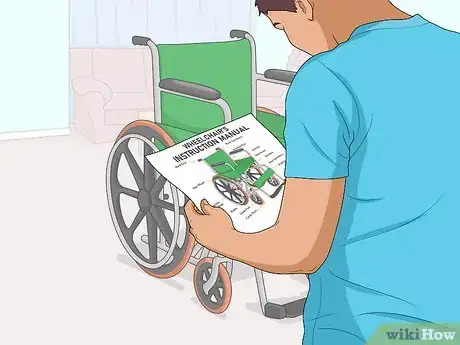
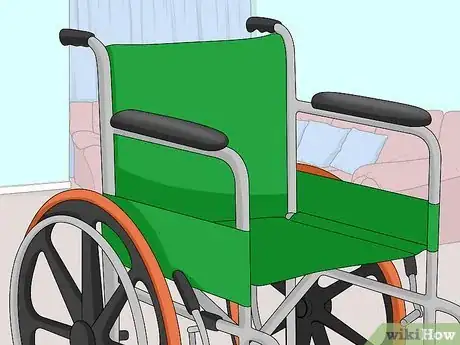
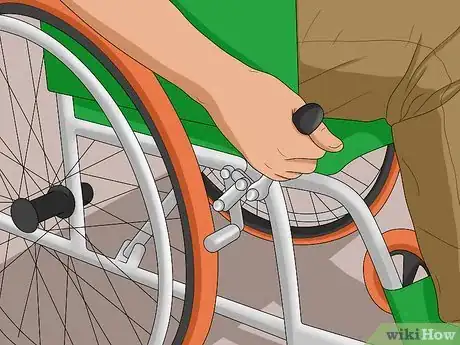
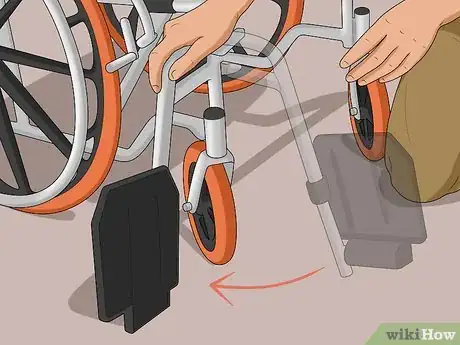

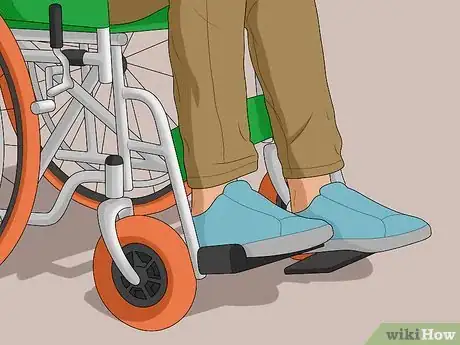
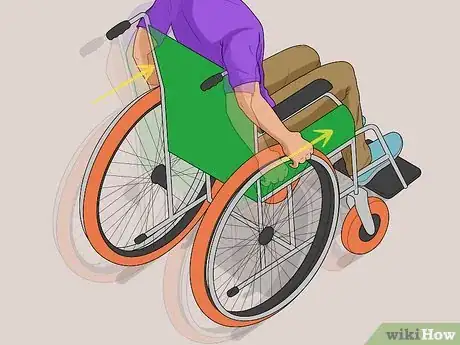
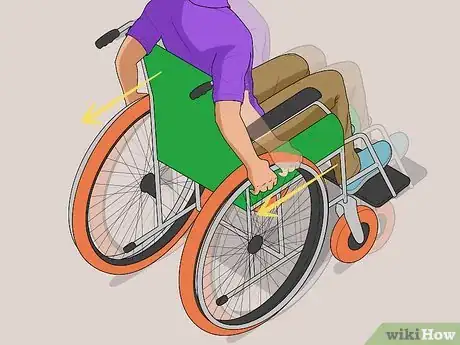




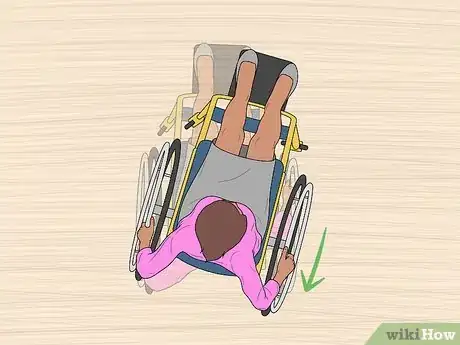


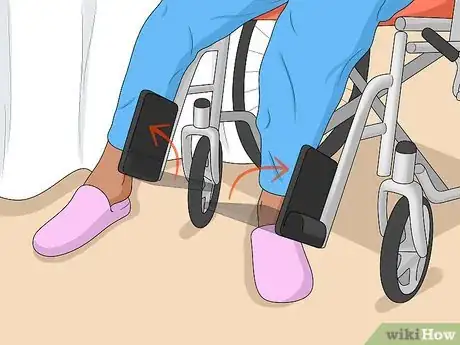
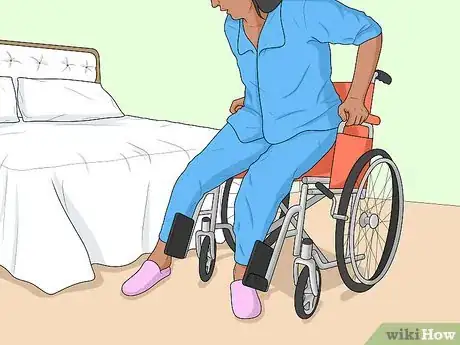









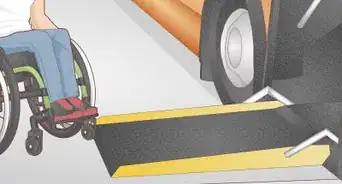










































Medical Disclaimer
The content of this article is not intended to be a substitute for professional medical advice, examination, diagnosis, or treatment. You should always contact your doctor or other qualified healthcare professional before starting, changing, or stopping any kind of health treatment.
Read More...